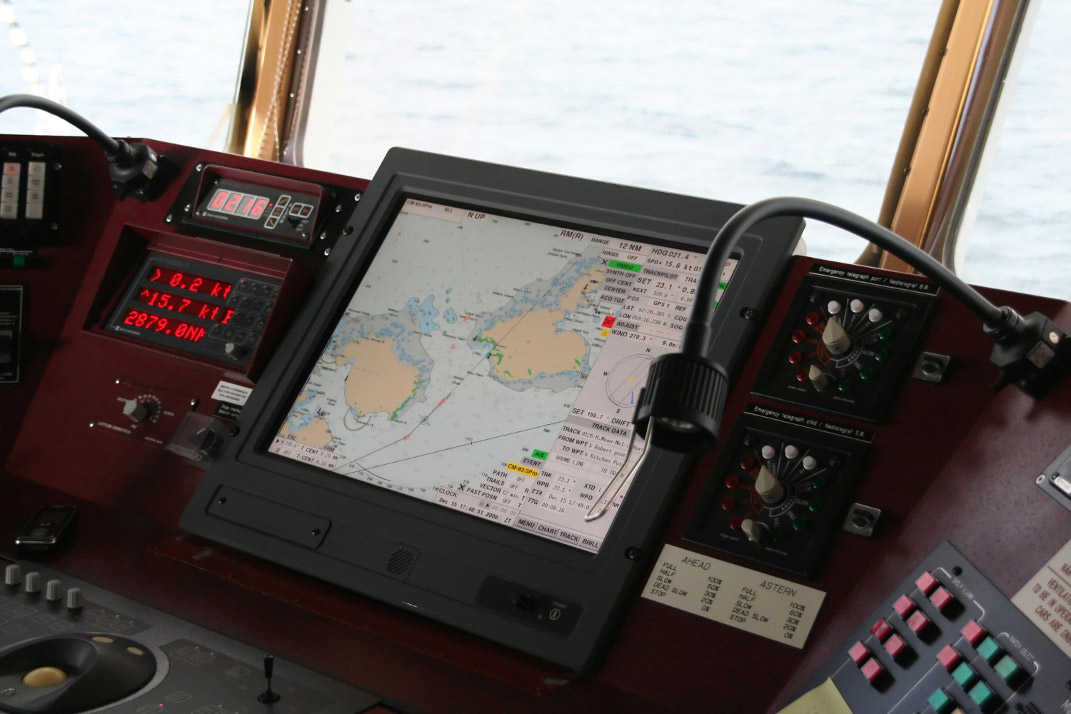Blog Post
Essential Marine Navigation Equipment: A Comprehensive Guide for 2025
Posted By: Harsh Bamnolia
Posted On : 30-Mar-2025

Essential Marine Navigation Equipment: A Comprehensive Guide for 2025
Understanding Marine Navigation Equipment
The marine navigation equipment on a ship plays a vital role in ensuring safe and efficient maritime travel.
It includes high-tech instruments that help sailors and ship operators determine their location, course, and surroundings with precision.
Over the years, marine navigation has evolved significantly, moving from traditional methods to highly sophisticated electronic navigation systems that utilize GPS, RADAR, AIS, and more.
The marine navigation equipment is essential for both commercial vessels and leisure boats, ensuring compliance with international maritime safety regulations such as SOLAS (Safety of Life at Sea) and IMO (International Maritime Organization).
As we step into 2025, advancements in marine navigation technology continue to revolutionize the industry.
This guide provides a comprehensive overview of the most critical marine navigation equipment, their functions, and why they are essential for modern maritime operations.
Essential Marine Navigation Equipment for 2025
There are several essential marine navigation tools that every vessel must have onboard for safe and efficient voyages. Below are some of the key pieces of equipment that are crucial for modern ship navigation systems.
1. Global Positioning System (GPS)
The GPS system is one of the most important pieces of marine navigation equipment.
It enables ships to determine their precise location anywhere in the world.
Modern GPS systems are integrated with AIS, RADAR, and ECDIS for real-time positioning and route planning.
2. Automatic Identification System (AIS)
AIS is a mandatory tracking system for ships, helping vessels identify and track nearby ships.
It improves situational awareness and prevents collisions in busy maritime zones.
AIS transmits and receives real-time ship details, including speed, heading, and destination.
3. RADAR (Radio Detection and Ranging)
RADAR is crucial for detecting nearby vessels, land masses, and obstacles in low visibility.
Helps in collision avoidance by providing real-time updates on surrounding traffic.
Advanced X-band and S-band RADAR systems are used on commercial ships.
4. Voyage Data Recorder (VDR)
The VDR records navigational and communication data to assist in accident investigations.
It functions like a black box for ships, ensuring compliance with international maritime safety regulations.
VDRs provide critical insights for improving ship operations and crew safety.
5. Echo Sounder (Depth Sounder)
Used to measure the depth of water below the ship's hull.
Helps in safe navigation, especially in shallow waters.
Modern sonar-based depth sounders provide detailed underwater mapping.
6. ECDIS (Electronic Chart Display and Information System)
A digital alternative to traditional paper charts.
Provides real-time chart updates, route planning, and GPS integration.
Required on all SOLAS-compliant ships to improve navigation efficiency.
7. Gyrocompass and Magnetic Compass
Gyrocompass provides a stable directional reference unaffected by magnetic interference.
Magnetic compass is used as a backup for emergency navigation.
Both are crucial for maintaining a consistent ship heading.
8. Marine Communication Systems (GMDSS Radio, VHF, MF/HF, UHF)
Global Maritime Distress and Safety System (GMDSS) ensures emergency communication at sea.
VHF, MF/HF, and UHF radios are used for ship-to-ship and ship-to-shore communication.
Essential for coordinating with coast guards, port authorities, and search & rescue teams.
9. Navtex Receiver
Used for receiving weather reports, navigational warnings, and emergency alerts.
Helps ships prepare for adverse sea conditions in advance.
Integrated with GMDSS for automated updates.
10. AIS SART (Search and Rescue Transponder)
A critical part of emergency distress systems onboard.
Sends distress signals that help rescue teams locate a vessel in emergencies.
Required under IMO and SOLAS regulations.
How to Maintain Marine Navigation Equipment for Long-Term Reliability
Having marine navigation equipment is not enough; regular maintenance and servicing are necessary to ensure optimal performance.
Routine Inspections and Calibration
Navigation equipment should undergo regular inspections by certified marine engineers.
Calibration is required for RADAR, ECDIS, and Gyrocompass to maintain accuracy.
Software Updates and Digital Maintenance
GPS, AIS, and ECDIS software should be updated to ensure compliance with the latest maritime regulations.
Keeping charts and digital navigation tools up to date helps avoid navigation errors.
Backup Systems and Redundancy Checks
Vessels should have backup navigation tools, such as paper charts, handheld GPS, and additional compasses.
Conducting emergency drills ensures the crew can navigate in case of electronic failures.
Compliance with IMO & SOLAS Standards
Marine navigation equipment must comply with IMO (International Maritime Organization) and SOLAS regulations.
Ships must carry certified and approved navigation tools to meet global safety standards.
Conclusion
The marine navigation equipment on a ship determines its ability to travel safely through various maritime conditions. GPS, RADAR, AIS, VDR, and GMDSS radios are essential tools that ensure smooth navigation, collision avoidance, and compliance with international regulations.
With technological advancements in 2025, the integration of smart AI-driven navigation systems, automation, and real-time data analytics is transforming marine navigation.
Investing in high-quality marine navigation equipment ensures efficiency, safety, and compliance for every voyage.
At Marinetech Safety & Shipping Corporation, we provide state-of-the-art marine navigation equipment that meets IMO and SOLAS standards.
Whether you need GPS, AIS, RADAR, or VDR systems, we offer high-quality solutions to enhance the safety of your vessel.
For the best marine navigation equipment, visit https://marinetechss.com/services/electronic-and-navigation-communication-service and explore our latest offerings.